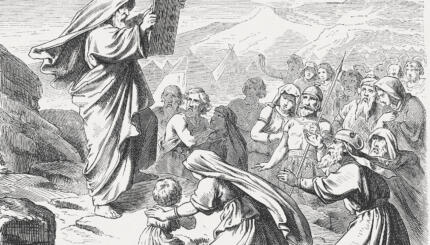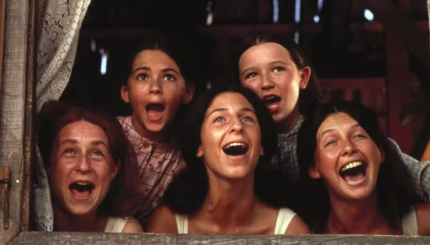Across the diversity of ceremonies and rituals marking birth and death, coming of age and coming together in partnership, healing and transition, several themes and issues emerge.
Covenant
Brit milah, usually translated as “the covenant of circumcision,” indicates not a special covenant but the ceremony in which a male child is physically imprinted with circumcision as a sign of God’s covenant with the Jewish people. This covenant was made first with Abraham (and, many would say, with Sarah too), renewed by every generation of Jews. It is reflected through God’s ongoing redemptive relationship with us; observance of the mitzvot, or commandments–both the obligations between us and God and those between us and other people–is our part of this covenantal relationship.
The theme of covenant is reflected differently in various lifecycle ceremonies. For example, bar/bat mitzvah marks a young person’s reaching the age of responsibility in this covenantal system. The wedding ceremony resonates with images of both interpersonal covenant and the divine-human relationship. In fact, the rich textual tradition of depicting the Jewish people’s covenant with God as a relationship of beloveds provides another layer of meaning for the Jewish wedding ritual.
The Role of Community
Traditional Jewish lifecycle rituals may be focused on the individual, but they are inherently public rather than private. (This is one concern that critics of ritual innovation raise: Many events, such as weaning and menopause, are focused on the individual and the body, inherently individual rather than communal, and thus not necessarily appropriate for the same kind of focus in Jewish practice.) A baby is welcomed not just into a family but into a covenantal community, whose lineage is traced back to the first Jews. A bar or child celebrates this transition with acts of participation in congregational life. An integral part of a couple’s wedding ceremony is the recitation of the Sheva Berakhot, the traditional seven blessings, which requires a quorum of 10, a minyan. In death, it is the community–not family members–who ritually prepare the body for burial–and a minyan, again, is required for recitation of the Mourner’s Kaddish. In many ways, the constitutes a symbolic community.

Help us keep Jewish knowledge accessible to millions of people around the world.
Your donation to My Jewish Learning fuels endless journeys of Jewish discovery. With your help, My Jewish Learning can continue to provide nonstop opportunities for learning, connection and growth.
Water in Rites of Passage
The mikveh or ritual bath, and water generally, is a part of many lifecycle events. Converts to Judaism immerse in the mikveh, as do many brides (and grooms) before their weddings. Many contemporary rituals for healing of mind and soul (for example, recovering from sexual assault or trying to conceive again after a miscarriage) incorporate immersion as a kind of cleansing between periods of one’s life. Water serves as a symbolic purifier of a corpse in traditional Jewish burial rites. At the other end of the lifecycle, many covenant ceremonies for baby girls incorporate water, with foot washing (an ancient symbol of welcome) or even immersion in a mikveh-like bath.
Tzedakah (Charity) and Social Action
It is a longstanding Jewish practice to give tzedakah contributions (righteous, charitable giving) not only as a regular part of one’s budget, but also in acknowledgement of a significant life event. Increasingly, individuals and families incorporate social conscience into celebrations in additional ways–for example, donating leftover food from catered events to a soup kitchen, or making a service project part of a child’s preparation for becoming a bar or bat mitzvah.
“Putting God on the Guest List”
The book by this title, written by Rabbi Jeffrey Salkin, focuses on how to make and keep a bar or bat mitzvah celebration a truly religious and spiritual event–as some would say wryly, how to
have less “bar” and more “mitzvah.” This challenge extends to any significant life event–for the planners and participants to make sure that it is not just focused on the individual(s), or serves as a time for excessive celebration, but embodies the values at the core of the event, as well as those which more generally reflect a sacred sensibility. (One interesting recent example is the limitations on expenditures for wedding celebrations which some Orthodox rabbis in the United States have mandated for their communities.)
mitzvah
Pronounced: MITZ-vuh or meetz-VAH, Origin: Hebrew, commandment, also used to mean good deed.

Help us keep Jewish knowledge accessible to millions of people around the world.
Your donation to My Jewish Learning fuels endless journeys of Jewish discovery. With your help, My Jewish Learning can continue to provide nonstop opportunities for learning, connection and growth.




